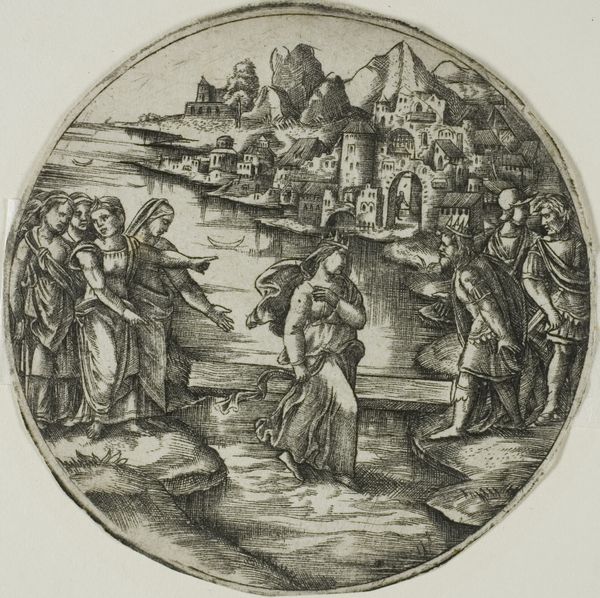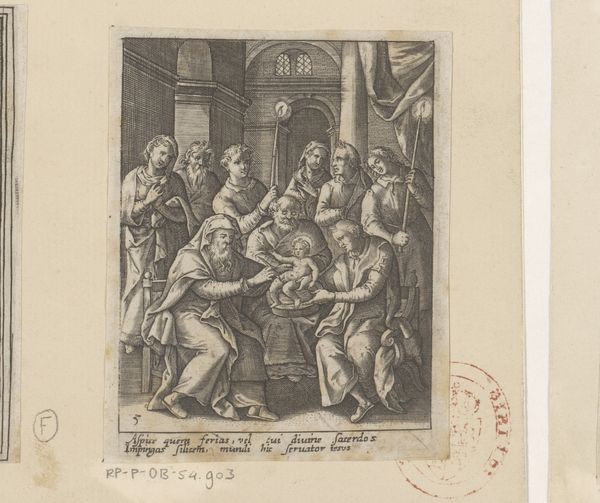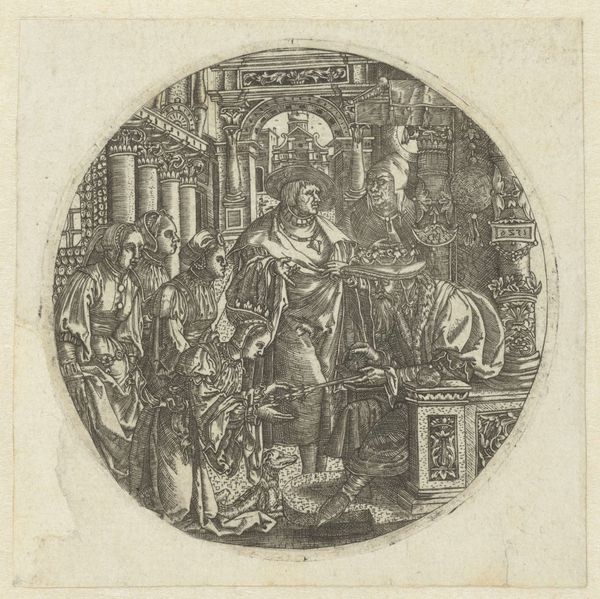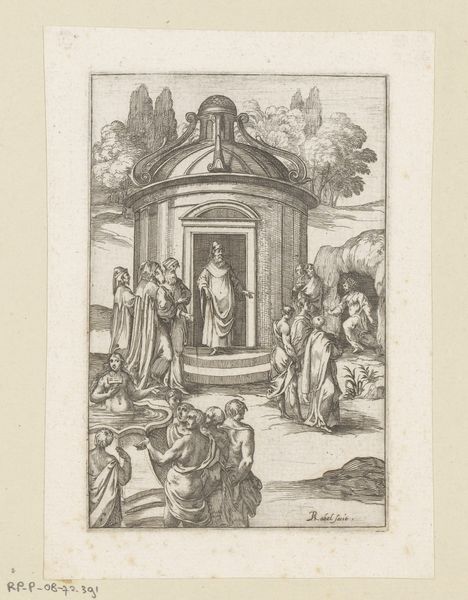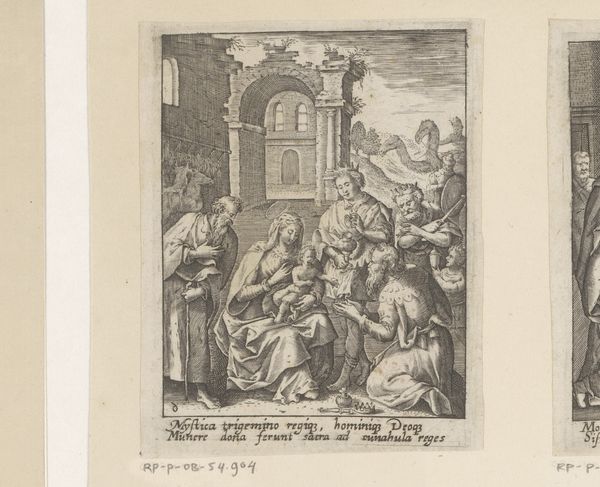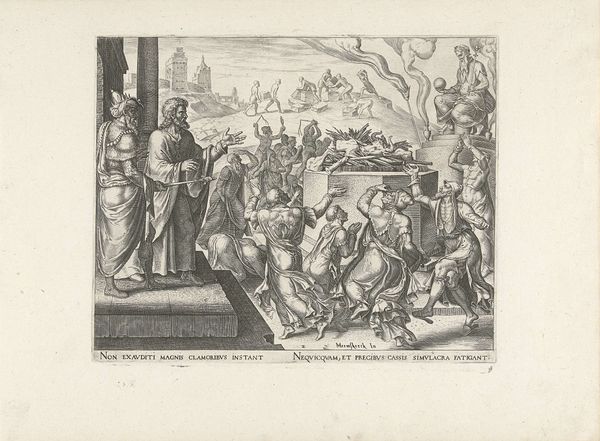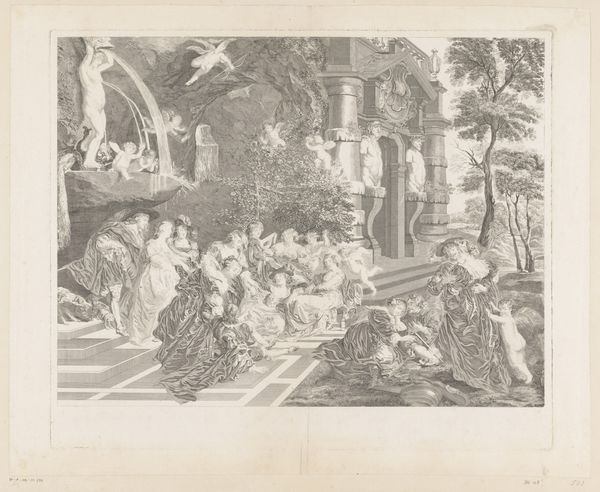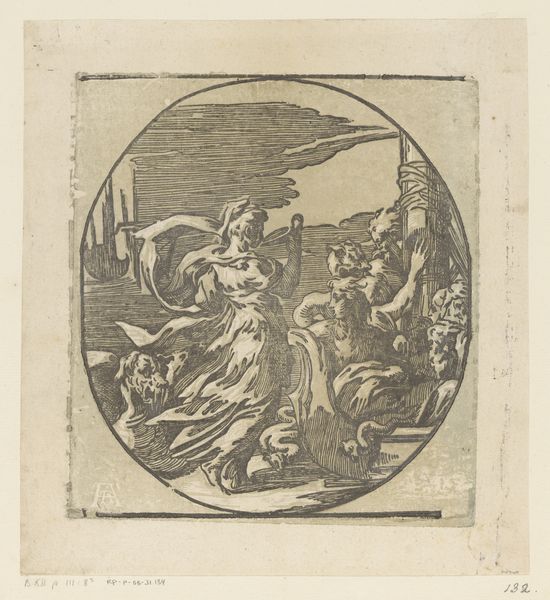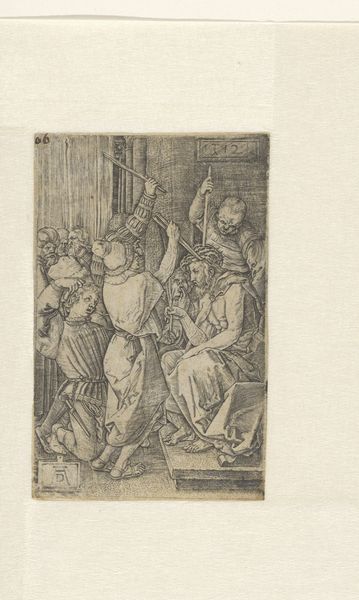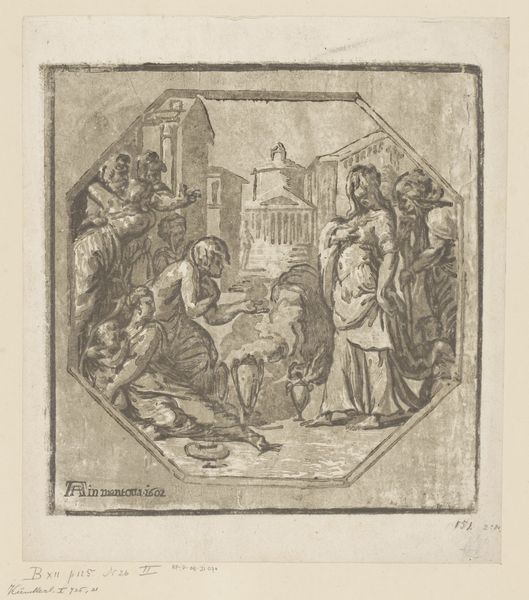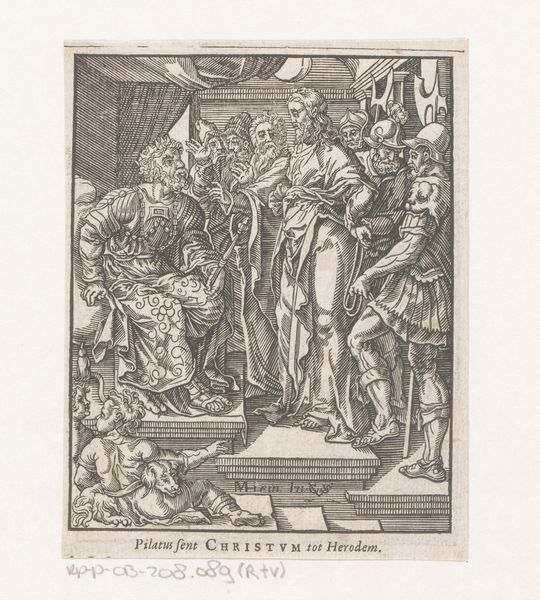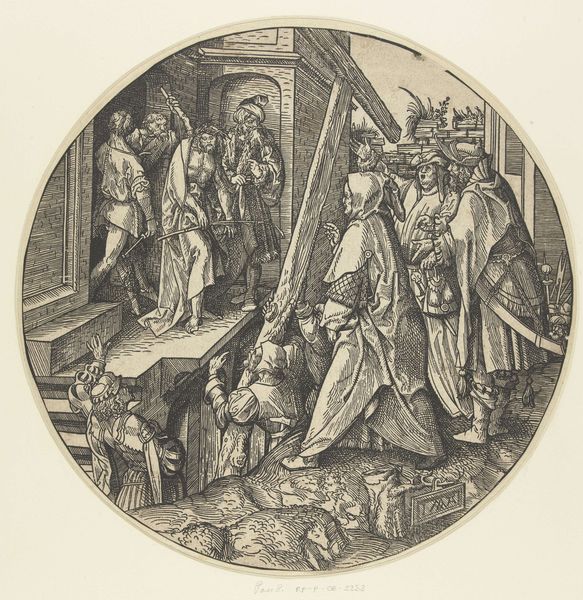
print, engraving
#
narrative-art
# print
#
old engraving style
#
figuration
#
pencil drawing
#
pen work
#
genre-painting
#
northern-renaissance
#
engraving
Dimensions: height 83 mm, width 66 mm
Copyright: Rijks Museum: Open Domain
Curator: This engraving, etched by Christoffel van Sichem II in 1617, depicts the Christ Child Building a Ship. Its intricate lines draw you into a scene brimming with detailed activity. Editor: The immediate impression is quite quaint, yet a little unnerving. There's something both naive and intense in its depiction of labor and implied religious devotion. Curator: Indeed. Observe how Sichem utilizes the density of the engraved lines to suggest shadow and form, thereby creating a surprising depth, considering it's just one colour and is such a small print. Note too how the eye is drawn to the contrasting textures of the hull. Editor: Agreed, the lines generate striking textural details. But to what extent is this mere craft? Shouldn't we consider the politics of the image, with labor foregrounded alongside depictions of childhood innocence and implied divinity, all rendered by a Northern Renaissance hand? The image reinforces an intricate religious-economic order. Curator: I find that perhaps the religious order is key here—specifically, the relationship between heaven and earth, revealed in a common shipbuilding event. But there is a striking focus on technique that would be important for period understandings and consumption of religious and secular engravings, without being mutually exclusive from a political or social reading. Editor: I concur to a point. Yet I suspect contemporary viewers would perhaps immediately feel unease in their construction and understanding of labor under a watchful godly and hierarchical presence in that era. Curator: This dynamic you pinpoint is very relevant. Though let’s observe in detail how van Sichem deploys contrast as more than simply visual data and see them also as structural and symbolic markers, as one works upon the other, not one after the other. Editor: Ultimately, both readings inform each other. Engaging with this print becomes an intersectional challenge and opportunity to broaden and complicate how we regard our past and our image archives. Curator: Precisely. A detailed, concentrated formal engagement provides us an important method in how we analyze any artwork in tandem with social understandings.
Comments
No comments
Be the first to comment and join the conversation on the ultimate creative platform.
